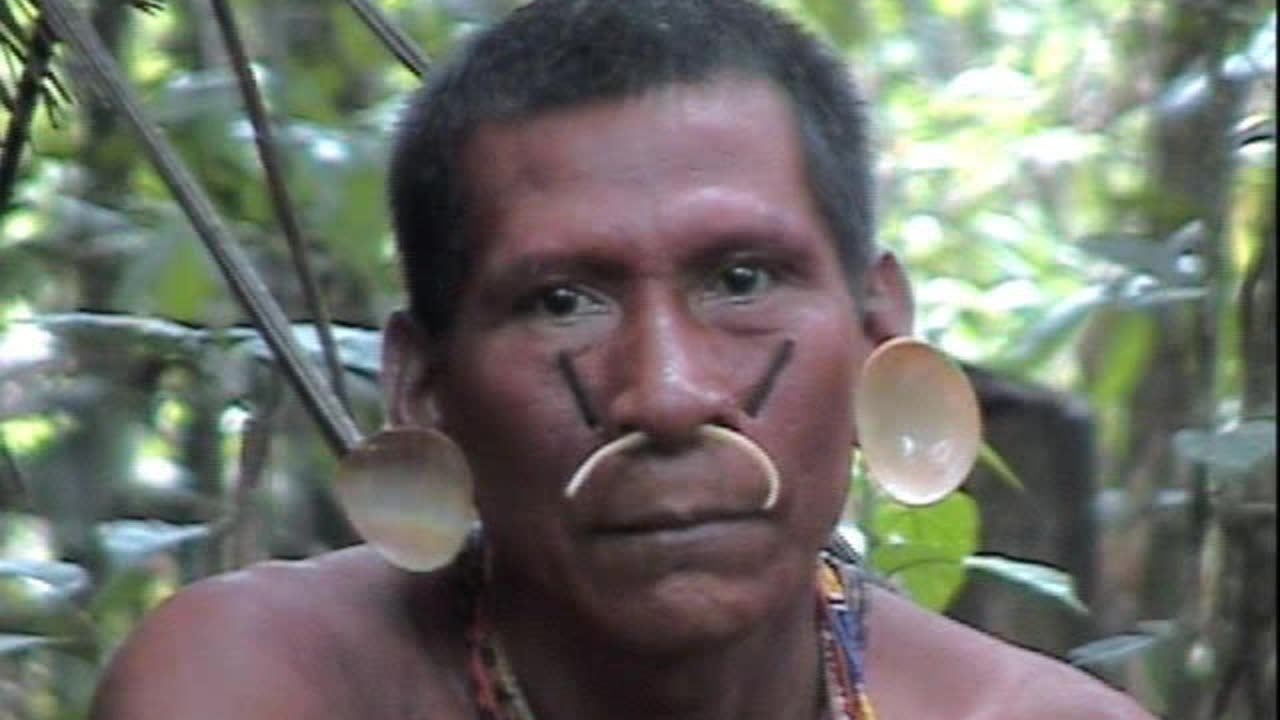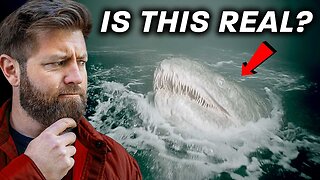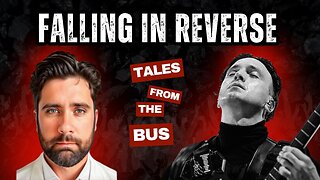Premium Only Content

Debunking The Black Indian Myth: From They Came Before Columbus
In They Came Before Columbus, Ivan Van Sertima put forward the argument that African people were in the Americas long before Columbus was. There are some problems with this theory. In the first place, there are no Egyptian historical records which suggest that the Egyptians ever sailed to America or even attempted such a journey. In They Came Before Columbus, Van Sertima argues that Egyptian journey to the Americas happened during the rule of the 25th dynasty, which was the Kushite dynasty that ruled Egypt. Van Sertima never explained why he selected this particular dynasty, but his reasoning for doing so is important because he later altered the date in African Presence in Early America to “948 or circa 1000 B.C.” Van Sertima was forced to alter his thesis in light of new evidence which demonstrated that the Olmec civilization was older than was originally believed, which leads me to the next issue.
Because the Olmec civilization is one that has been largely shrouded in mystery, there have been a number of theories about the historical roots of the Olmec. Van Sertima was among those who argued that the Olmec had African origins, whereas others such as Mike Xu have argued that the Olmec civilization has Asian roots. Not only because of the apparent Asian features of some of the Olmec sculptures, but Xu also attempted to draw a connection between the Olmec script and Chinese characters.
There have been a number of diffusion theories regarding the Olmec. Van Sertima’s case in They Came Before Columbus is the best known, certainly not the only one. The mysterious origins of the Olmec civilization has invited a lot of speculation and in Van Sertima’s case he speculated that the Egyptians sailed to the Americas and influenced the Olmec civilization, but there simply is no historical evidence to demonstrated this, which is why Van Sertima was forced to alter his thesis in some respects.
Van Sertima also argued it was Columbus himself who suggested that Africans were in the Americas before he was. Van Sertima makes this claim at the very beginning of the video below.
Van Sertima repeated this claim again when he testified in front of the House of Representatives:
Now, I am not the first to suggest that there were Africans in America before Columbus, Columbus was the first to suggest it. Columbus actually said in the journal of his second voyage when he was in Haiti, then known as Espanola, Native Americans came to him and told him that Black people had come in large boats from the south and southeast trading in gold-tipped metal spears. Probably Columbus did not believe this and that fact in itself would not be enough because the so-called Black people could be any people. It could be dark, bronze people from South America. However, Columbus actually sent back on a mail boat to Spain, samples of these gold-tipped metal spears. When the metallurgists in Spain assayed these spears, they found they were identical, not similar, but were identical in their ratio of gold, silver and copper alloys as spears then being forged in African Guinea.
I want to make a point of clarification here. Columbus never claimed that he saw black people in the Americas. Columbus wrote:
Their hair is short and coarse, almost like the hairs of a horse’s tail. They wear the hairs brought down to the eyebrows, except a few locks behind, which they wear long and never cut. They paint themselves black, and they are the color of the Canarians, neither black nor white. Some paint themselves white, others red, and others of what color they find. Some paint their faces, others the whole body, some only round the eyes, others only on the nose.
The description that Columbus gives certainly is not a description of black people in the Caribbean. In fact, Columbus writes that they were not black. Van Sertima claims to be referencing Columbus, but he is actually referencing Bartolomé de Las Casas’ writings. De Las Casas gave this description in his account of Columbus’ voyage:
Wednesday, July 4, he ordered sail made from that island in which he says that since he arrived there he never saw the sun or the stars, but that the heavens were covered with such a thick mist that it seemed they could cut it with a knife and the heat was so very intense that they were tormented, and he ordered the course laid to the way of the south-west, which is the route leading from these islands to the south, in the name, he says, of the Holy and Indivisible Trinity, because then he would be on a parallel with the land of the sierra of Loa and cape of Sancta Ana in Guinea, which is below the equinoctial line, where he says that below that line of the world are found more gold and things of value; and that after, he would navigate, the Lord pleasing, to the west, and from there would go to this Española, in which route he would prove the theory of the King John aforesaid; and that he thought to investigate the report of the Indians of this Española who said that there had come to Española from the south and south-east, a black people who have the tops of their spears made of a metal which they call guanin, of which he had sent samples to the Sovereigns to have them assayed, when it was found that of 32 parts, 18 were of gold, 6 of silver and 8 of copper.
Neither Columbus nor de Las Casas wrote anything about African spears. This is an inference that Van Sertima makes, but he presents his inference as a fact. Nowhere does de Las Casas suggest that the spears he was referring to were identical or even similar to spears in West Africa. Moreover, how would he have known? Did the Spanish also assay the spears of West Africa to know what ratio of gold, silver and copper alloys were found in the African spears? Van Sertima does not say, but he jumps the conclusion that the spears that were sent to Spain were African spears without providing a basis for why he believes so.
A second problem with the manner in which Van Sertima uses this piece of information is the assumption that the black people whom de Las Casas refers to were African. Columbus was quoted before as noting that the natives sometimes painted themselves black, so for all we know the black people being referred to were people who were painted black as opposed to black skinned people. Even Van Sertima himself admits that the people who were trading these spears could be dark bronze people from South America as opposed to African.
Van Sertima’s scholarship was flawed in many respects, but he made an attempt to challenge the racist scholarship of his time. Unfortunately, the scholarship that he has inspired has tended to be of a worse quality than Van Sertima’s was. For example, whereas Van Sertima argued that Africans influenced the civilization of the Americas, Clyde Ahmad Winters goes further by suggesting that Africans founded the Olmec and all other major American civilization, which is a claim that Van Sertima never made. Winters writes:
The first civilization to appear in America, called the Olmec culture was founded by Africans…The original Maya were probably Africans…The Aztecs, Zapotecs, Toltecs, and Maya usually occupied urban centers built by Africans, or Afro-Indians.
Hidden Colors also makes the argument that Africans were in the Americas before Columbus. In the documentary, Umar Johnson claims that Africans were going back and forth engaging in cultural and economic trade before Columbus. In How Europe Underdeveloped Africa, Walter Rodney explained that “if any African canoes reached the Americas (as is sometimes maintained) they did not establish two-way links.” If these two-way links were established, Umar fails to cite specific examples because there are no examples. This two-way trade never happened. Phil Valentine is even more confused. In the documentary he says that Mansa Musa is the same person as Montezuma. This statement is horribly misinformed. Mansa Musa never sailed to America. Mansa Musa took the throne after the previous ruler, Abu Bakr II, went on an expedition to sail the Atlantic Ocean. He never returned, though some (including Van Sertima) argued that he arrived in the Americas. Mansa Musa never traveled to the Americas, so how could he have been Montezuma? The two likely were not even alive at the same time period.
I am not completely dismissive of the idea that Abu Bakr could have in fact successfully arrived in the Americas. Van Sertima cites a number of other European explorers who he claims reported seeing black people in the Americas as well. I am not suggesting that no African people were in the Americas before Columbus. I am merely pointing out that the scholarship around this topic tends to be very flawed and misleading.
One of the most baffling claims to me is the idea that the slave trade happened in reverse and that Native Americans were shipped to Africa, not the other way around. There’s not a shred of evidence to prove this. Moreover, the slave narratives all make it very clear that the enslaved population in the Americas came from Africa — so much so that in Cuba some enslaved persons committed suicide, in hope that their spirit would return to Africa.
Despite this, some individuals would argue:
A mass colony of Africans were not shipped from Africa to America. The truth is that Black Indians were shipped from America to Europe! They were then shipped from Spain to Africa as commodity for African resources. These Black Indians, now mistaken as African Americans, were shipped back to America and classified as “African Slaves.” This part of our history is what the school systems fail to mention in history programs.
What would the point of shipping Black Indians to Europe then to Africa and then back to America again be? Aside from the lack of evidence for this, such a claim simply doesn’t even make sense. I noted before that Van Sertima’s claims were flawed in some respects, but his arguments were still logical in certain respects and he did attempt to provide documentation for at least some of his claims — even if at times the documentation he presented was misleading. But the claims presented in Hidden Colors and the claims presented by others who promote the notion of Black aboriginals are so misinformed that in many cases they just seem nonsensical.
—
Dwayne is the author of Kingdoms and Civilizations of Africa and several other books on African and African Diaspora history.
Kingdoms and Civilizations of Africa
https://dwomowale.medium.com/debunking-the-black-indian-myth-from-they-came-before-columbus-to-hidden-colors-8dc3f429fd17
-
 6:01
6:01
JUST A HOMELESS MAN
1 year agoTrump in 1999: Oprah would be my VP choice
207 -
 8:05
8:05
Freedom Frontline
15 hours agoAOC DISRESPECTS Byron Donalds And Gets DESTROYED Immediately
2121 -
 11:53
11:53
GBGunsRumble
12 hours agoGBGuns Range Report 15NOV25
582 -
 21:37
21:37
Forrest Galante
7 hours ago6 Deadly Sea Monsters That Actually Exist
61.3K2 -
 8:10
8:10
MattMorseTV
15 hours ago $10.65 earnedDemocrats caught COLLUDING with Epstein.
12K38 -
 LIVE
LIVE
Lofi Girl
3 years agolofi hip hop radio 📚 - beats to relax/study to
796 watching -
 43:24
43:24
ThisIsDeLaCruz
1 day ago $7.62 earnedWhat Fans Never Knew About Falling In Reverse’s Guitarist
21.7K -
 14:57
14:57
The Pascal Show
1 day ago $3.49 earnedTHIS IS INSANE! Megyn Kelly SLAMMED For Questioning Whether Epstein Was a P*dophile?!
9.63K7 -
 55:46
55:46
PandaSub2000
1 day agoBeyond Good & Evil | ULTRA BEST AT GAMES (HD Edited Replay)
37.7K3 -
 1:53:29
1:53:29
Badlands Media
1 day agoDevolution Power Hour Ep. 407: Purity Tests, Psyops & the MAGA Identity Crisis
215K51